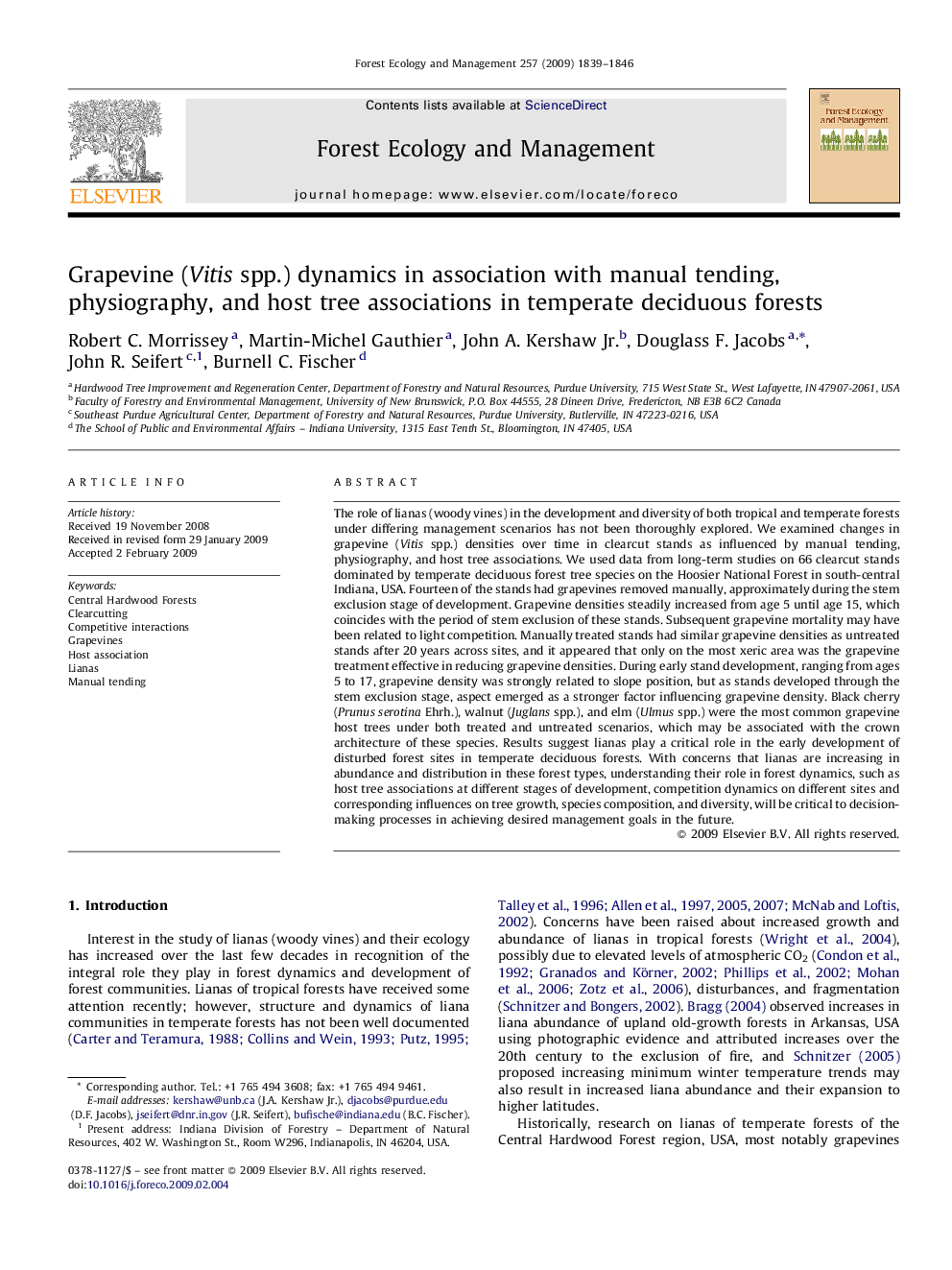| کد مقاله | کد نشریه | سال انتشار | مقاله انگلیسی | نسخه تمام متن |
|---|---|---|---|---|
| 88849 | 159323 | 2009 | 8 صفحه PDF | دانلود رایگان |

The role of lianas (woody vines) in the development and diversity of both tropical and temperate forests under differing management scenarios has not been thoroughly explored. We examined changes in grapevine (Vitis spp.) densities over time in clearcut stands as influenced by manual tending, physiography, and host tree associations. We used data from long-term studies on 66 clearcut stands dominated by temperate deciduous forest tree species on the Hoosier National Forest in south-central Indiana, USA. Fourteen of the stands had grapevines removed manually, approximately during the stem exclusion stage of development. Grapevine densities steadily increased from age 5 until age 15, which coincides with the period of stem exclusion of these stands. Subsequent grapevine mortality may have been related to light competition. Manually treated stands had similar grapevine densities as untreated stands after 20 years across sites, and it appeared that only on the most xeric area was the grapevine treatment effective in reducing grapevine densities. During early stand development, ranging from ages 5 to 17, grapevine density was strongly related to slope position, but as stands developed through the stem exclusion stage, aspect emerged as a stronger factor influencing grapevine density. Black cherry (Prunus serotina Ehrh.), walnut (Juglans spp.), and elm (Ulmus spp.) were the most common grapevine host trees under both treated and untreated scenarios, which may be associated with the crown architecture of these species. Results suggest lianas play a critical role in the early development of disturbed forest sites in temperate deciduous forests. With concerns that lianas are increasing in abundance and distribution in these forest types, understanding their role in forest dynamics, such as host tree associations at different stages of development, competition dynamics on different sites and corresponding influences on tree growth, species composition, and diversity, will be critical to decision-making processes in achieving desired management goals in the future.
Journal: Forest Ecology and Management - Volume 257, Issue 8, 31 March 2009, Pages 1839–1846